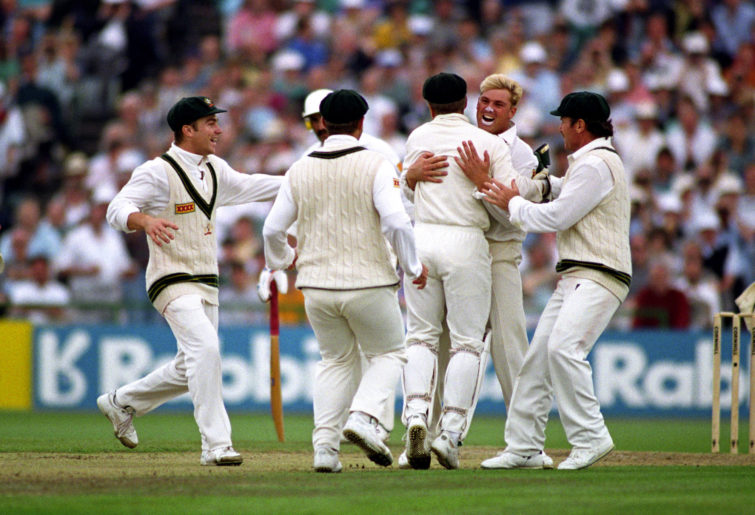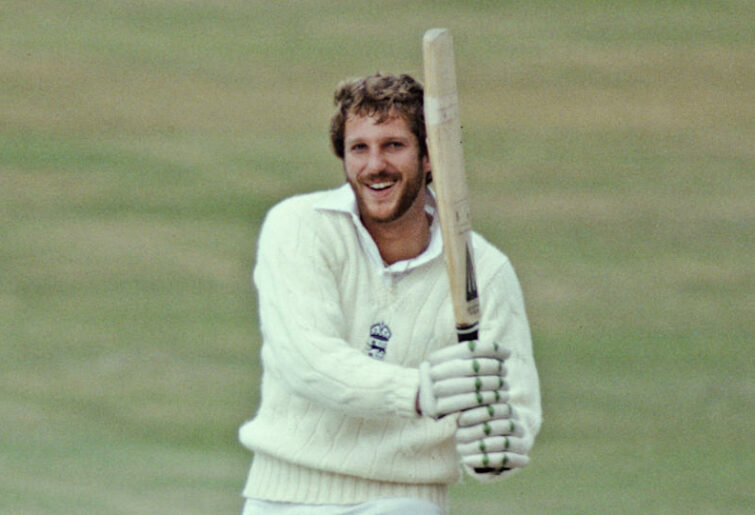'This is the Starc comeback!' Mitchell back to his best, demolishes Mumbai in barnstorming over
As wife Alyssa Healy watches on, Mitchell Starc was back in form, taking three wickets in an over including the dangerous Tim David, to…
Opinion
Cricket is full of cases where one country either has abundant talents in one or more areas, or the exact opposite – the latter being common for emerging nations.
Here, I have looked some of these cases, as well as situations where some stubbornness on the part of the selectors led to artificial crises.
Case 1: More supply than demand
A classical example is the excess fast-bowling talent in the Windies during the 1980s. Much has been written about Wayne Daniels’ poor luck, but there were others as well.
Wayne Davis’ record of 45 wickets in 15 Tests doesn’t sound brilliant but ten of those 15 Tests were in India. Also, his 1983 debut came on an absolutely placid St John’s pitch. Davis mostly got his chances when one or two of the key bowlers were missing.
Even more interesting was the case of Tony Gray, from Port of Spain. Fast-bowling talents are rare in Trinidad so there was great excitement when he emerged in the mid ’80s. And in his first regular season with the Windies, in 1986-87, he took 22 wickets at only 17 apiece across five Tests – and three of his matches were in Pakistan. His ODI record shows wickets at 19 each.
But he missed the whole of the 1987-88 season due to injury, seeing Curtly Ambrose and Ian Bishop emerge the next generation of quicks. A brief return in the ODI team against Allan Border’s Australia in 1991 saw him take 6-50 in front of his ground but his omission from the England tour in the summer signaled the end of his international career.
Pakistan’s case in the ’90s was slightly different. With the two Ws in supreme form, the demand for a quality third seamer was negligible. That was unfortunate because there were some fine talents like Aaqib Javed and Muhammad Akram available.
Shoaib Akhtar only emerged as a key bowler only towards the end of the decade.
After their inconsistent performances in the 1980s, Australia regained their status as a major force in Test cricket in the 1990s. And it started an era when there was abundant talent in almost every field.

(Photo by Rui Vieira/EMPICS via Getty Images)
While players like Mathew Hayden, Damien Martyn, Justin Langer and Stuart MacGill got late recognition for their talents, the likes of Stuart Law and Phil Emery made only one Test appearance each for the baggy greens.
Even they can consider themselves lucky. Michael Di Venuto, Jamie Siddons and Jamie Cox never played any Tests for Australia. I am sure that The Roar readers can add a few more names to this list.
India during the ’60s and ’70s had abundant talents in spin bowling. Skipper Mansoor Ali Khan Pataudi’s policy of playing to the team’s strength meant that India regularly fielded at least three front-line spinners in Tests both home and away.
But, still, the presence of Bishan Bedi stood in the way of two fine left-arm slow bowlers, Padmakar Shivalkar from Bombay and Rajinder Goel from Haryana and Delhi.
Shivalkar was a big influence in Bombay’s total dominance of Ranji cricket for over a decade, which lasted until the mid 1970s. Goel, who passed away this June, is still the highest wicket-taker in the Ranji Trophy.
Dilip Doshi from Saurashtra and Bengal eventually replaced Bedi in the Indian team, but he was already past 30 when he made his debut against Australia in the autumn of 1979.
VV Kumar, a talented leg spinner from Tamil Nadu, ended up playing just two Tests mainly due to the presence of Bhagwat Chandrasekhar.
Case 2: More demand than supply
This is a common scenario in emerging cricket nations. This often means that the selectors often have to rely on aged players.
At the age of 42, Somachandra de Silva, the Sri Lanka leggie, produced a marathon spell of 45 overs at Lord’s in the only England innings during the 1984 Test. This was his last Test and he wasn’t fully fit either.
For Zimbabwe, at the age of 45, offie John Traicos took 5-86 from 50 overs in Zimbabwe’s debut Test.
At the other end of the scale, the Bangladeshi selectors tried some young seamers in the early days of our Test history. While Ian Chappell is a relentless advocate of picking up fast bowlers when they are young, overwork of pace bowlers just past their teen days carries serious injury risks.
Talha Jubair, after making his Test debut at the age of 16, ended up playing only seven Tests for the Tigers. Even Mashrafe Mortaza’s persistent injury problems may have been caused by his early inclusion in top-level cricket.
While the problem of lack of talent is an expected problem for the emerging nations, it was a big surprise to me to see England struggle badly in the 1980s. With a dramatic fall in the production of quality cricketers, the English reached new lows in the decade.
In this scenario, some ordinary cricketers with fairly modest abilities appeared for the England national team. Names like Tony Pigott, Chris Cowdrey and Neal Radford are just three examples from a long list of such cricketers.
In a desperate bid, the authorities in England changed the structure of domestic first-class cricket late in the decade, and though initially not successful, it eventually worked for England.
England’s great rival Australia also struggled in the 1980s, especially against the West Indies and their neighbours New Zealand. But the emergence of some young talents in the second half of the decade boosted the hopes of the Australian fans.
But there seemed few prospects in the spin department. Bob Holland won two Tests in 1985, but after that we saw some fairly ordinary spinners play for Australia until the arrival of the great one.
Case 3: The artificial crisis
In some cases the stubbornness of the selectors can lead to artificial crisis. England selectors’ obsession with a so called balanced team in the 1980s meant that they always looked for an all-rounder in the team.
So in the absence of Ian Botham we saw Derek Pringle (batting average 15.50), Chris Cowdrey (14.42) and David Capel (15.38) were often tried in the number six position.

(Photo by Adrian Murrell/Allsport/Getty Images/Hulton Archive)
Back in the 1970s, the Indian selectors seemed obsessed with the idea of finding a suitable opening partner for Sunil Gavaskar.
After consistently changing and chopping in the opening position – they even tried a few middle-order batsmen in the opening slot – they eventually found their man in Chetan Chauhan, who established himself in the Indian team in Australia in 1977-78. For the next three seasons the pair did a fabulous job, especially at the Oval in 1979 and at the MCG in 1981.
But the selectors, in a strange move, dropped Chauhan at the beginning of the 1981-82 season. They pointed towards his batting average of 31.57 in Tests, ignoring the impressive record together of the pair. In their stubborn mind, only another Gavaskar could be the suitable opening partner.
So what happened next? Between December 1981 and September 1982, Gavaskar had five different opening partners: Krish Srikkanth, Pranab Roy, Ghulam Parkar, Ravi Shastri and Arun Lal.
Finally, following the retirement of Ashley Mallett in 1980, Australia struggled for a quality spinner for a long time. Even Bruce Yardley’s record becomes pretty ordinary if we ignore the 1981-82 season. Still, for the sake of the balance of the team, often some fairly ordinary spinners were picked to play for Australia at the time.
Ray Bright’s inclusion in the Headingley Test in 1981 is somewhat mysterious to me. He only bowled four overs in the match.